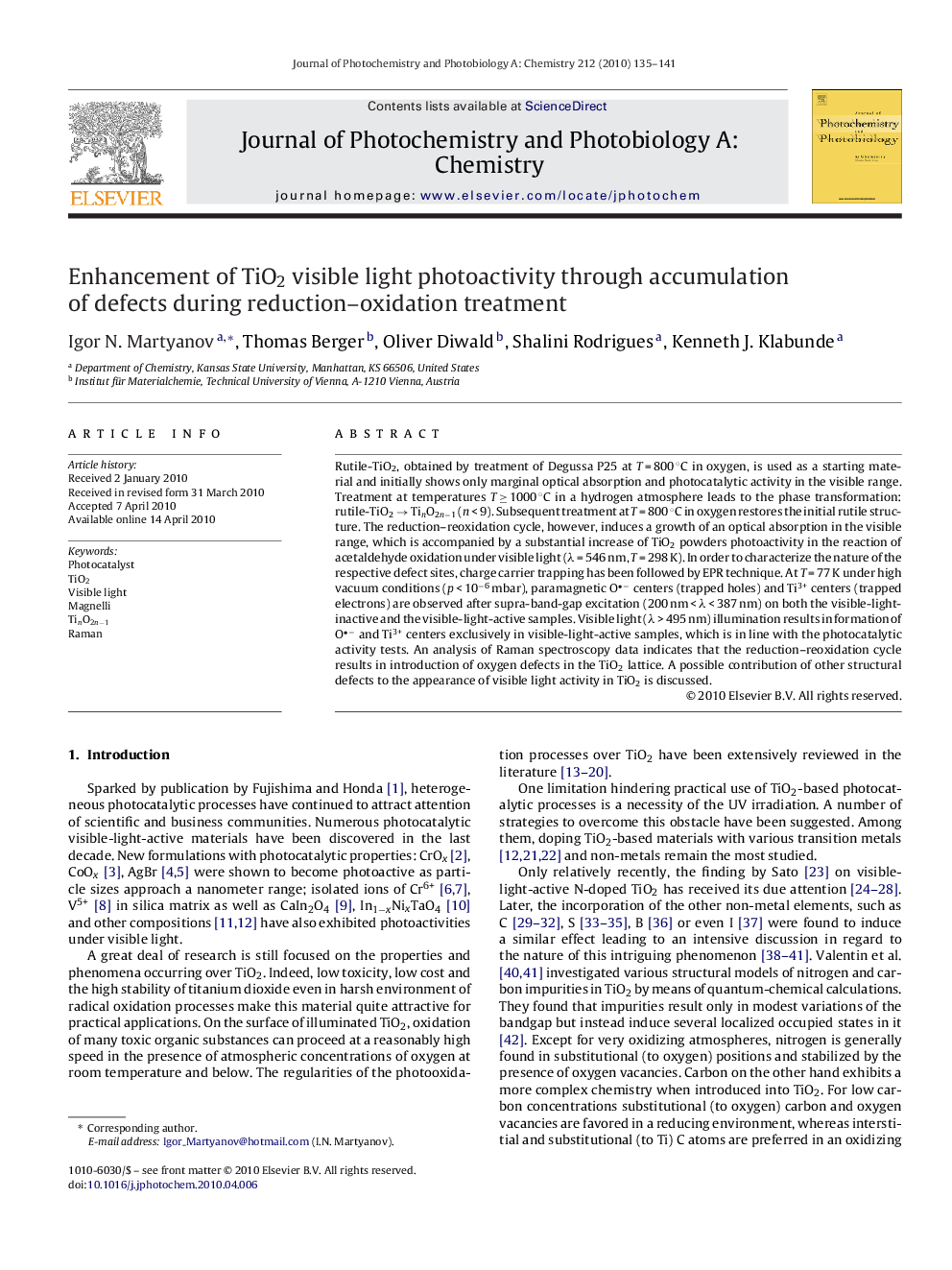| کد مقاله | کد نشریه | سال انتشار | مقاله انگلیسی | نسخه تمام متن |
|---|---|---|---|---|
| 26981 | 43991 | 2010 | 7 صفحه PDF | دانلود رایگان |

Rutile-TiO2, obtained by treatment of Degussa P25 at T = 800 °C in oxygen, is used as a starting material and initially shows only marginal optical absorption and photocatalytic activity in the visible range. Treatment at temperatures T ≥ 1000 °C in a hydrogen atmosphere leads to the phase transformation: rutile-TiO2 → TinO2n−1 (n < 9). Subsequent treatment at T = 800 °C in oxygen restores the initial rutile structure. The reduction–reoxidation cycle, however, induces a growth of an optical absorption in the visible range, which is accompanied by a substantial increase of TiO2 powders photoactivity in the reaction of acetaldehyde oxidation under visible light (λ = 546 nm, T = 298 K). In order to characterize the nature of the respective defect sites, charge carrier trapping has been followed by EPR technique. At T = 77 K under high vacuum conditions (p < 10−6 mbar), paramagnetic O− centers (trapped holes) and Ti3+ centers (trapped electrons) are observed after supra-band-gap excitation (200 nm < λ < 387 nm) on both the visible-light-inactive and the visible-light-active samples. Visible light (λ > 495 nm) illumination results in formation of O− and Ti3+ centers exclusively in visible-light-active samples, which is in line with the photocatalytic activity tests. An analysis of Raman spectroscopy data indicates that the reduction–reoxidation cycle results in introduction of oxygen defects in the TiO2 lattice. A possible contribution of other structural defects to the appearance of visible light activity in TiO2 is discussed.
Journal: Journal of Photochemistry and Photobiology A: Chemistry - Volume 212, Issues 2–3, 20 May 2010, Pages 135–141